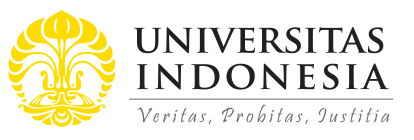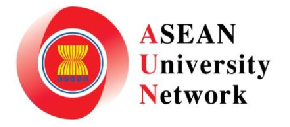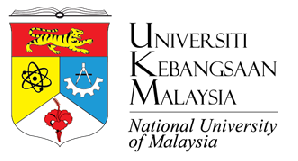
Abstract
Using Community Organizing Participatory Action Research(COPAR) as the main framework for the multiple data-gathering methods utilizedin the study, the researcher addressed the following objectives: (1) to assessthe educational needs of the Lumad and peasant communities in light of theimplementation of Republic Act 10533, and (2) to developa curriculum that addresses the needs of the Lumad and peasant communitiesconsidering the learning competencies stipulated by RA 10533. Freire’s methodof education was maximized as participants in the research included men, women,and children who learned toassess their role in their community as agents of change with the goal ofachieving social transformation through education. Still adhering to Freire’smethod of education, the intended curriculum that was designed is simple andeasy to understand, integrative, and perceptive of the social realitiessurrounding the Lumads and other peasant learners. From the state-approvedcurriculum, the new alternative curriculum ensured the presence of lessons andactivities with a positive influence on all the aspects of a child’sdevelopment: physical, emotional, social, linguistic, aesthetic, and cognitivethrough the application of the outcomes-based education (OBE) framework. Curriculumdesign also utilized the Makabayan (nationalist), Makamasa (mass-oriented), andSiyentipiko (scientific) (MMS) orientation, which is based on rooted assessmentof the needs of the community learners. The integration of OBE with MMSframework is expected to result in transformative education that can producelifelong learners who will aspire to be part of national development whilepromoting their identity and the good of their communities. The researchprocess undertaken proved that community immersion provides an opportunity forself-reflexivity that can result in a more inclusive curriculum design. Lastly,it can be concluded that community organizing in education is a painstaking andendless process of collaborations, which, if purposeful and sustained, canpositively impact the communities.
References
Awid, M. (2009). Literacy education as a strategy for indigenous peoples’ empowerment: The Western Subanon literacy project. QC: UP Press.
Department of Education. (2013). Implementing rules and regulations of Republic Act No. 10533. Retrieved from www.deped.gov.ph/sites/default/files/order/2013/DO_s2013_43.pdf
EMRIP (2009), Study on lessons learned and challenges to achieve the implementation of the right of indigenous peoples to education: Report of the Expert Mechanism on the Rights of Indigenous Peoples. Human Rights Council, UNGA, A/HRC/EMRIP/2009/2
Freire, P. (1985). The politics of education: culture, power, and liberation. South Hadley, Mass: Bergin & Garvey.
Grant, E. (1998). My lands my track: A framework for the holistic approach to indigenous studies. Innisfail, Qld: Innisfail and District Education Centre
Hope, I. (2017). COPAR-Community Organizing Participatory Action Research. Retrieved from http://rnspeak.com/community-health-nursing/copar-community-organizing-participatory-action-research/
Jimenez, C. (2008). Community Organizing Participatory Action Research (CO-PAR) for Community health development: Helping people grow and glow. QC: C & E Publishing, Inc.
Le Grange, l. (2007). Integrating Western and indigenous knowledge systems: the basis for effective science education in South Africa. International Review of Education, 53(5-6), pp. 577-591.
McCarthy, C., Giardina, M., Harewood, S., and Park, J.-K. (2005). Contesting culture: Identity and curriculum dilemma in the age of globalization, postcolonialism, and multiplicity. In C. McCarthy, W. Crichlow, G. Dimitriadis & N. Dolby (Eds), Race, identity, and representation in education (Second ed., pp. 153–165).N.Y.: Routledge
Reason, P. (Ed.). (1994). Participation in human inquiry. London: Sage Publications.
Save Our School Network. (2016). Make education accessible to Lumad. Retrieved from saveourschool.org Spady, W., and K. Marshall (1991). Beyond Traditional Outcome-Based Education. Educational Leadership 49, 2: 67–72.
Stinger, E.T. (1999). Action Research (2nd ed). Thousand Oaks, CA: Sage.
Turnbull, D. (2000). Masons, Tricksters and Cartographers: Comparative Studies in the Sociology of Scientific and Indigenous Knowledge. London and New York: Routledge.
UNESCO. (1996). Education for tomorrow. Retrieved from www.unesco.org/education/pdf/DELOR2_E.PDF United Nations Development Programme (2009). Human Development Report. Retrieved from http://hdr.undp.org/sites/default/files/reports/269/hdr_2009_en_complete.pdf
Vera, M. (2012). Community Organizing Participatory Action Research (COPAR). Retrieved from: https://nurseslabs.com/tag/community-organizing-participatory-action-research-copar/
Wrigley, Terry. 2004. School Effectiveness : The Problem of Reductionism. In: British Educational Research Journal 30(2): 227–244.
Yntig, N. (2007). Effectiveness of community organizing through participatory action research. Retrieved from http://www.herdin.ph/index.php/partners?view=research&cid=46038
Recommended Citation
Malata-Silva, Janette H.
(2017).
Community Organizing Participatory Action Research (COPAR) in curriculum development.
ASEAN Journal of Community Engagement, 1(1).
Available at: https://doi.org/10.7454/ajce.v1i1.58







